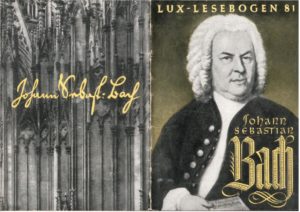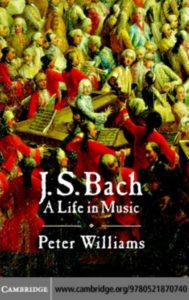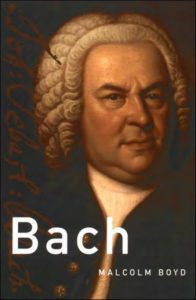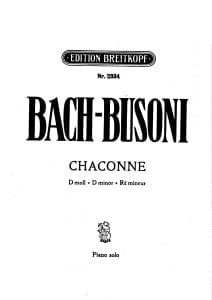Browse in the Library:
Or browse in the categories menus & download the Library Catalog PDF:
Find Bach’s sheet music in our Library
The title is misleading: the English Suites are more ‘French’ in character than the French Suites, which are more characteristic of the Italian style. ‘By design the composer is here less learned than in his other suites,’ remarked one early biographer, ‘and has mostly used a pleasing, more predominant melody.’ Just so, and the same is true of the pair of suites BWV 818 and 819 which fall outside the collection but belong with it in terms of style.
To all of them Yuan Sheng brings considered tempi and precise articulation in the mould of Tureck. To Bach at his most uncomplicated, Sheng brings the virtues of simplicity and clarity. Again Yuan Sheng draws the listener into his highly intelligent musical discourse, vibrant and moving, speaking through the medium of a modern Steinway piano. Composer: Johann Sebastian Bach Artist: Yuan Sheng (piano).

“China’s premier interpreter of Bach”, is what International Piano Magazine called Yuan Sheng. A pupil of Solomon Mikowsky (Manhattan School of Music) and notably Rosalyn Tureck, Yuan Sheng extensively studied the performance practice of Baroque music. Equally at home at the harpsichord he has an instinctive feeling for the possibilities, sonorities and touch of the instrument at hand, so that “the listener might easily have imagined the composer at the keyboard” (Boston Intelligencer).

Johann Sebastian Bach (31 March 1685 – 28 July 1750) was a German composer and musician of the Baroque period. He is known for instrumental compositions such as the Brandenburg Concertos and the Goldberg Variations, and for vocal music such as the St Matthew Passion and the Mass in B minor. Since the 19th-century Bach Revival he has been generally regarded as one of the greatest composers of all time.

The Bach family already counted several composers when Johann Sebastian was born as the last child of a city musician in Eisenach. After being orphaned at age 10, he lived for five years with his eldest brother Johann Christoph, after which he continued his musical formation in Lüneburg. From 1703 he was back in Thuringia, working as a musician for Protestant churches in Arnstadt and Mühlhausen and, for longer stretches of time, at courts in Weimar, where he expanded his organ repertory, and Köthen, where he was mostly engaged with chamber music. From 1723 he was employed as Thomaskantor (cantor at St. Thomas) in Leipzig. He composed music for the principal Lutheran churches of the city, and for its university’s student ensemble Collegium Musicum. From 1726 he published some of his keyboard and organ music. In Leipzig, as had happened during some of his earlier positions, he had difficult relations with his employer, a situation that was little remedied when he was granted the title of court composer by his sovereign, Augustus, Elector of Saxony and King of Poland, in 1736. In the last decades of his life he reworked and extended many of his earlier compositions. He died of complications after eye surgery in 1750 at the age of 65.

Bach enriched established German styles through his mastery of counterpoint, harmonic and motivic organisation, and his adaptation of rhythms, forms, and textures from abroad, particularly from Italy and France. Bach’s compositions include hundreds of cantatas, both sacred and secular. He composed Latin church music, Passions, oratorios, and motets. He often adopted Lutheran hymns, not only in his larger vocal works, but for instance also in his four-part chorales and his sacred songs. He wrote extensively for organ and for other keyboard instruments. He composed concertos, for instance for violin and for harpsichord, and suites, as chamber music as well as for orchestra. Many of his works employ the genres of canon and fugue.

Throughout the 18th century Bach was primarily valued as an organist, while his keyboard music, such as The Well-Tempered Clavier, was appreciated for its didactic qualities. The 19th century saw the publication of some major Bach biographies, and by the end of that century all of his known music had been printed. Dissemination of scholarship on the composer continued through periodicals (and later also websites) exclusively devoted to him, and other publications such as the Bach-Werke-Verzeichnis (BWV, a numbered catalogue of his works) and new critical editions of his compositions. His music was further popularised through a multitude of arrangements, including, for instance, the Air on the G String, and of recordings, such as three different box sets with complete performances of the composer’s oeuvre marking the 250th anniversary of his death.
